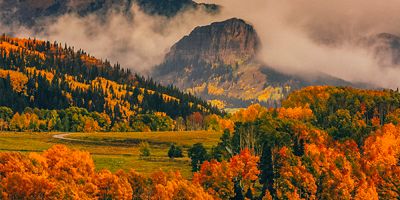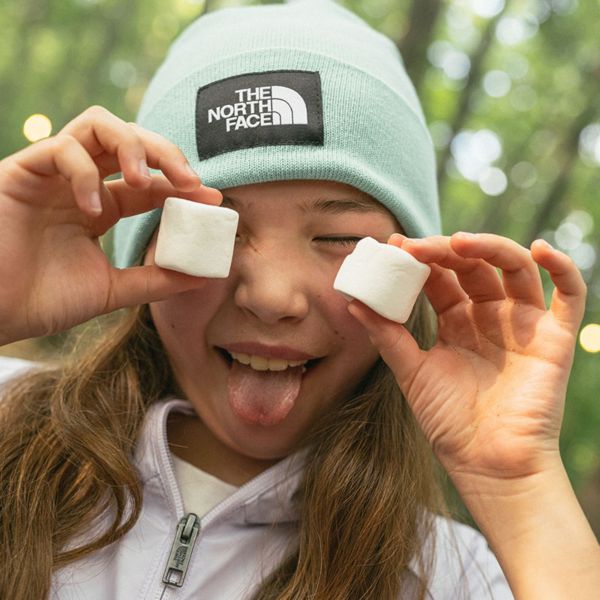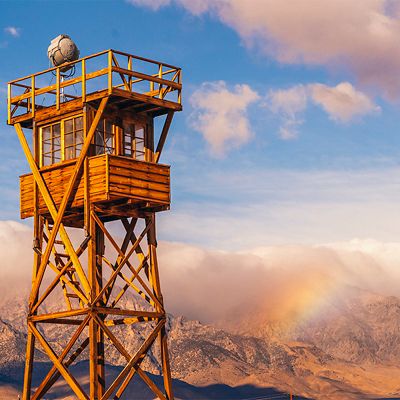As a mother of three, Potts-Joseph (she/her) speaks with a fierce passion about how environmental issues will affect the upcoming generation. And as an avid outdoor enthusiast, her voice glitters with awe every time she talks about dog sledding, snowboarding, or her other adventures. The longer she talks, the more you realize just how deeply that nature is embedded into her soul.
As for the tattoos? Those signify yet another facet of Potts-Joseph’s identity: She’s a member of Alaska’s Han Gwich’in Nation, an Indigenous tribe whose Arctic way of life is under threat. When her children were young, Potts-Joseph worked hard to instill in them the profound sense of connection that the Gwich’in have always had with the land. Over time, she became a snowboard instructor and guide to share that connection with others. Then she founded Native Youth Outdoors, a program that helps Native Alaskans reconnect with the land via snowboarding. Now, she’s expanded her mission even further.
A board member of the Alaska Wilderness League and a member of The North Face Explore Fund Council, Potts-Joseph has become an influential leader in the fight to save the Arctic National Wildlife Refuge (ANWR), a swath of sacred wilderness in far northern Alaska that’s recently been leased for oil and gas drilling. In between time spent in the mountains and with family, Potts-Joseph sat down to discuss protecting the Arctic, staying connected to the land, and raising Native kids in a modern world.
PUBLIC LANDS: A lot of people ask about your tattoos. Can you share their meaning?
JODY POTTS-JOSEPH: Our traditional tattoos are a representation of our rights of passage as women. They were banished through colonialization as something evil. But it’s only this generation that’s started to bring them back.
You’re also a tattoo practitioner yourself. Did you do your daughter’s chin tattoo? Was that nerve-wracking?
I did my daughter Quannah’s tattoo when she was 14, and that was the first tattoo I ever gave. She’s the first girl from our tribe to wear these tattoos in over 100 years. That alone shows so much bravery and courage on her part.
Quannah could have gotten her tattoo sooner than 14, but I wanted to wait until I felt like she was strong enough and able to represent herself with grace and dignity while wearing tattoos. Already as Native people, we’re looked at differently. When we have tattoos, even more so. There can be a lot of ignorant statements and questions. I wanted to make sure that Quannah was at a level of emotional intelligence where she could handle these complicated conversations. So we did a lot of talking and sweat ceremonies, but at some point, it was finally the right time.
Quannah’s coming-of-age ceremony was a very powerful and empowering moment for both of us. And at that moment, I saw her really gain a lot of confidence and strength. I think wearing these tattoos has really empowered her as she moves through life.
[Editor’s note: Potts-Joseph emphasizes that it’s been powerful for Indigenous people to be able to reclaim their identities through traditional tattooing, but that it’s a closed practice, not a fashion trend. In other words, if you’re not Indigenous but are thinking of getting a similar tattoo—like some have after seeing Quannah reach international fame as a fashion supermodel and environmental advocate—don’t.]
When did you start dog mushing and snowboarding? And how does snowboarding fit in with the traditional ways of travel that you grew up with?
I grew up in the bush in Eagle Village, Alaska [where she recently returned to live, along the Yukon River closest to ANWR’s southeastern boundary], and was pretty much raised in a dog sled. During the winter months, we used a dog sled for transportation, and in the summer, we traveled by canoe. After I finished college and came home, I was living in the woods with my three kids. That’s when I got a dog team myself and continued to pursue that lifestyle.










